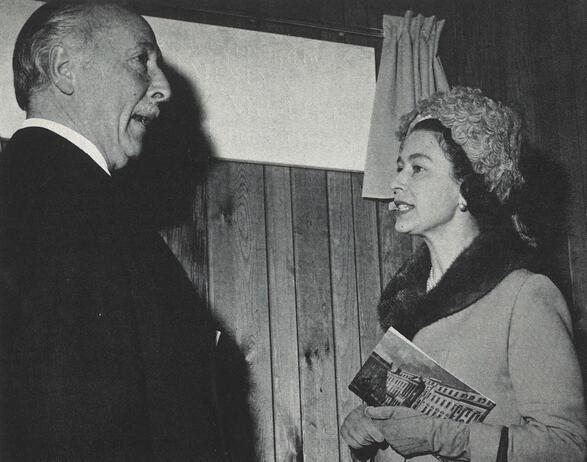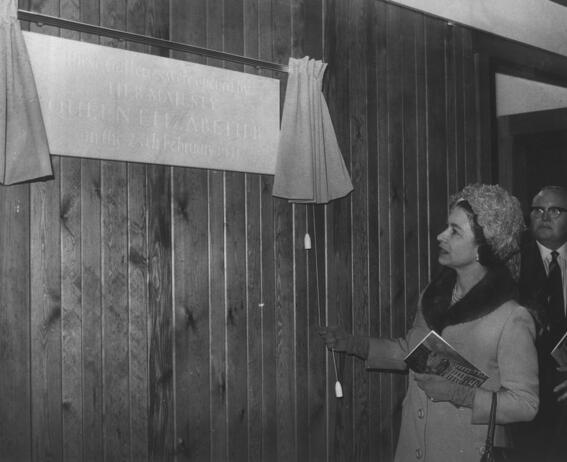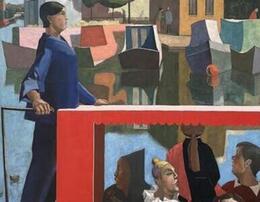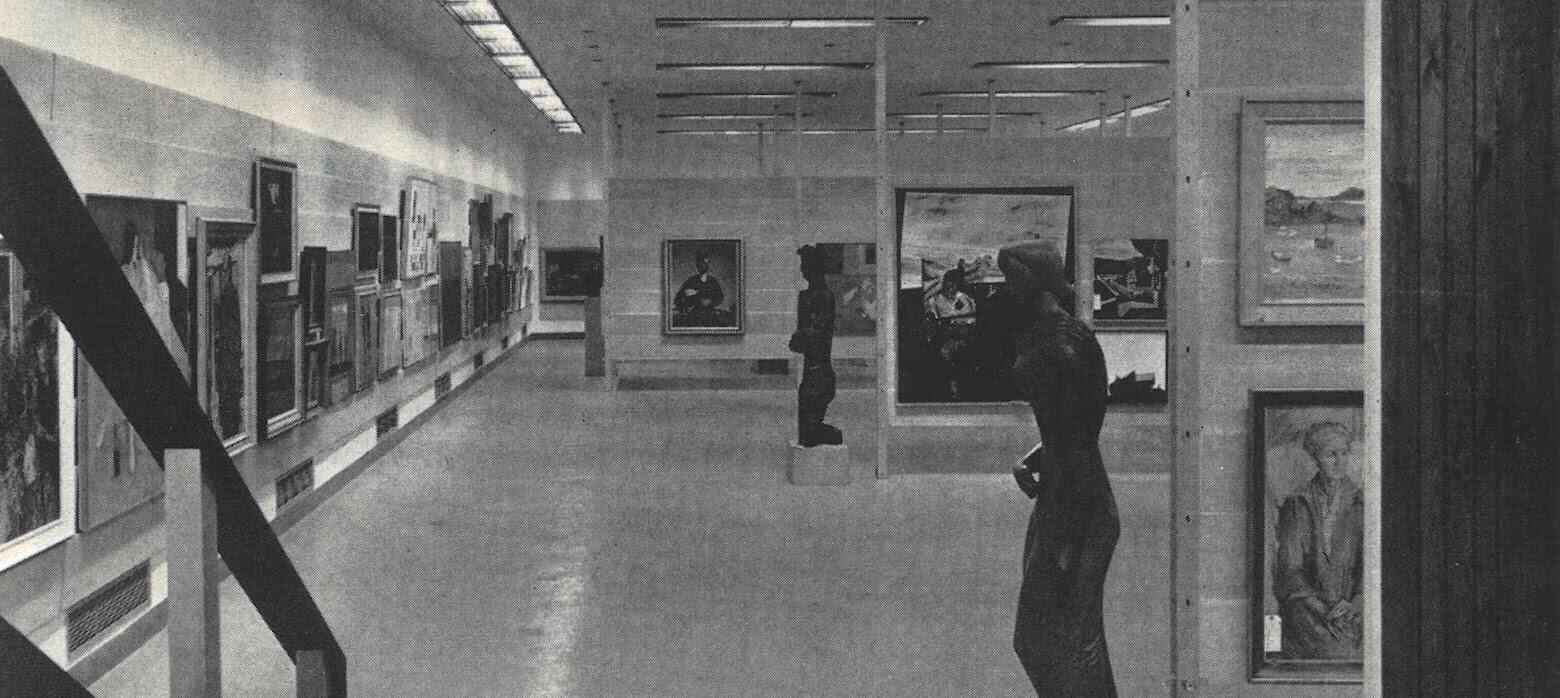From the Archives: A Personal Record
From the Archives
The following is an article from Spring 1972.
'A Personal Record' by Edward Halliday CBE (1902-1984), then Chairman of the Federation of British Artists, is his first-person recollection of the founding of the Federation of British Artists and its move to Mall Galleries.
A Personal Record
by Edward Halliday PRBA PRP,
Chairman of the Governors of the Federation of British Artists
The idea of bringing together a number of Art Societies under one administrative umbrella was discussed as far back as 1939. It was not however until twenty years later, when it became known with certainty that the leases of the Suffolk Street Galleries and the Piccadilly Galleries, at which most, if not all of the more important of the Royal Societies held their exhibitions, would terminate in the late 1960s or early 1970s and would not be renewable, that I called the meeting which may be said to have given birth to the Federation of British Artists.
Artists are, perhaps by definition, individualists, difficult people to get to agree on almost any subject. That perhaps is their strength. But when the societies to which they belong and through which they enjoy exhibition and other facilities are faced with extinction they must be persuaded to come together, agree to differ on many things but at least to see the necessity of joining a common cause which will ensure their survival.
That first meeting was held in a top room at the Arts Club in Dover Street on February 26th 1959. Sir James Gunn, then President of the Royal Society of Portrait Painters, Cosmo Clark, of the New English Art Club, and Lord Pearce, a fellow-member of mine in the Royal Society of British Artists, accepted invitations to attend — as, of course, did Maurice Bradshaw. I say ‘of course’ because for long it had been realised that he, as Secretary of several of the Societies, was the one man in whose ability we all had great faith and trust and without whom we could not hope to achieve any plan for the future.
And that plan was to form ourselves into a group to enable us, not only to negotiate from a position of greater strength than would be possible as individual Societies for the lease of any new premises, but also, by pooling our administration, save costs by the elimination of cumbersome repetitive accounting and other office work.
It was not difficult at that initial meeting to get full agreement in principle with a plan to federate in some way. But, even then, it was stressed that, by doing so, much care must be taken to ensure that the individual character, aims, rules and so on of any component Society must be respected and preserved. This was recognised to be of paramount importance and later on, when others were invited to join us in the project, this was the one point on which all had to be convinced before agreeing to come in with us.
So Maurice Bradshaw set the lawyers to work to create a Federation of British Artists and he and I, together with Mr Holroyd Chambers, the distinguished Surveyor, opened up personal negotiations with the Crown Commissioners. It was they who were the freeholders of the Suffolk Street Galleries and they who had found it impossible to renew the lease which had been held there (with several extensions) since 1823 when Nash built them for the Royal Society of British Artists.
I well remember our first meeting with the Crown. It was made plain to us that under no circumstances could they find their way to a further renewal of the lease as the whole area was destined for re-development. What then were we to do? Were we to be out on the street – to carry on our artistic activities on the pavement or on the Park Railings? The prospect was bleak indeed!
Were we to be out on the street - to carry on our artistic activities on the pavement or on the Park Railings? The prospect was bleak indeed!
Then suddenly and quite unexpectedly, out of the blue, the Crown said they could, if we wished, offer us alternative accommodation! What this would be we had no idea nor, I believe, at that moment had they, but it was clear that they appreciated our plight and, recognising the importance of the continuance of our activities in the world of Art, wanted to help us in any way they could.
After some weeks of suspense, during which we were left to speculate on the sort of premises which might be offered us, we were invited to inspect certain houses at Carlton House Terrace. The idea was to run several houses together and make use of the large entertainment rooms as galleries and the rest as offices.
Well, as you can imagine, this did not appear to us an ideal solution to our problems. But after all, we argued, there were many fine galleries, at home and abroad and many great collections, housed in similar premises. Something really splendid could doubtless emerge from such a scheme ... so we accepted the Crown’s offer gratefully and set to work on detailed plans.
It was not until March 12th 1965 at a meeting chaired by Lord Perth, the Chairman of the Crown Commissioners, that we were told of the possible use of the so-called ‘Podium’ — that is, the long one-storied doric-columned lower part of Carlton House Terrace, facing on The Mall. Apparently it was Lord Perth’s idea to bring together at Carlton House Terrace, certain Art and Learned Societies and associated bodies then housed elsewhere and today, as is well-known, the Institute of Contemporary Arts and the Royal Society (from Burlington House), the Town and Country Planning Association, the Civic Trust and others have joined the Federation of British Artists in this distinguished corner of the Capital.
So we were to have part of the podium and one of the houses in the Terrace!
The rest you know. The Mall Galleries, among the finest in London if not Europe, are there for you all to exhibit in and for all the world to enjoy. But what you cannot know is the extent of the love and labour expended for twelve tiring years by Maurice Bradshaw, in close collaboration with Kenneth Peacock, the Architect, and Patrick Bolshaw of the Crown Commissioners, to bring the whole thing to such splendid completion and so provide a fitting headquarters for our Federation.
And this achievement was crowned by the gracious consent of Her Majesty the Queen to open the Galleries on February 25th 1971 - an occasion which filled the hearts of Maurice and those closely associated with him – of all of us – with pride.

Images: (above) Her Majesty the Queen with Edward Halliday at the opening of Mall Galleries on 25 February 1971; (below) HM The Queen with Maurice Bradshaw; (banner) Mall Galleries on the occasion of its inaugural exhibition, by the Royal Society of British Artists © Colin Westwood


